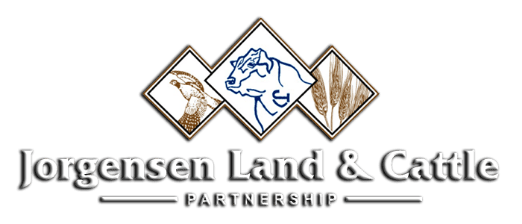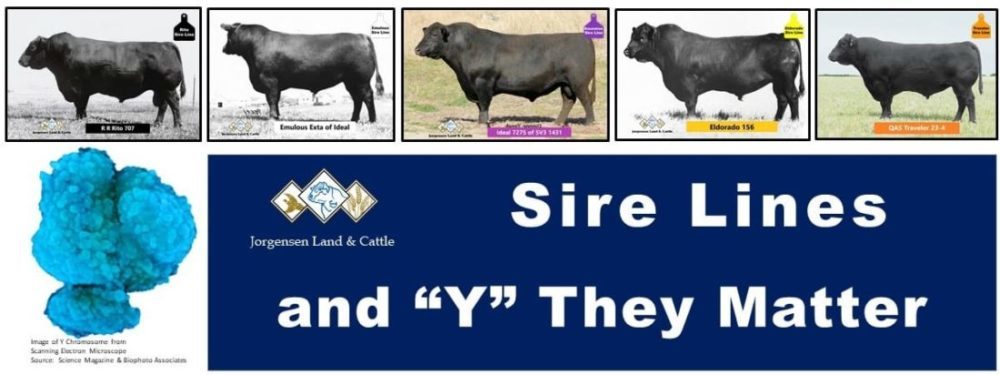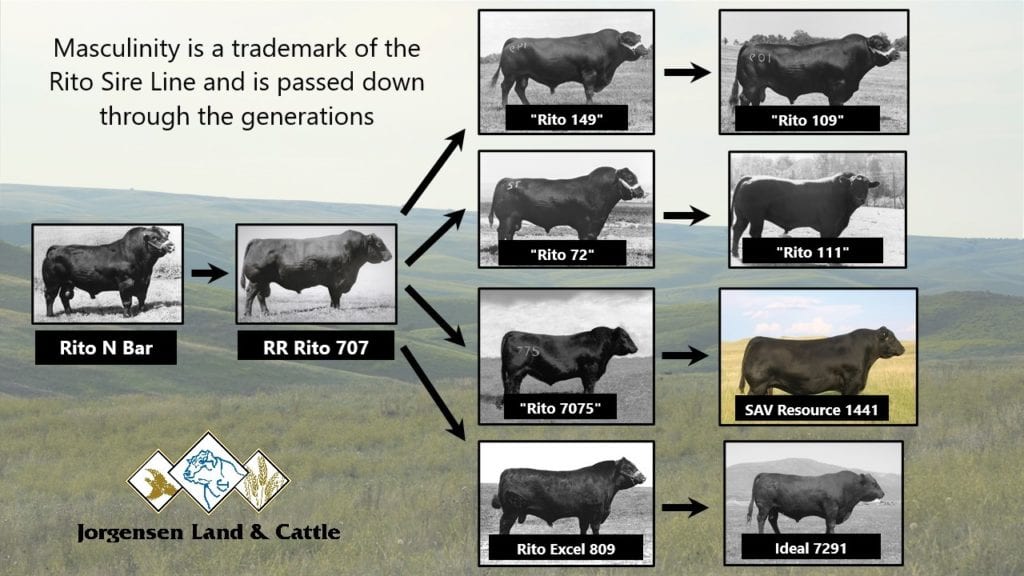At Jorgensen Land & Cattle, our breeding program is primarily composed of five separate & distinct foundational Sire Lines. Each sire line makes their own set of genetic contributions to our breeding program, the Angus breed, and cattlemen across America. We put a lot of thought, analysis & effort into improving our Sire Lines, and we use them strategically to make our breeding program better.
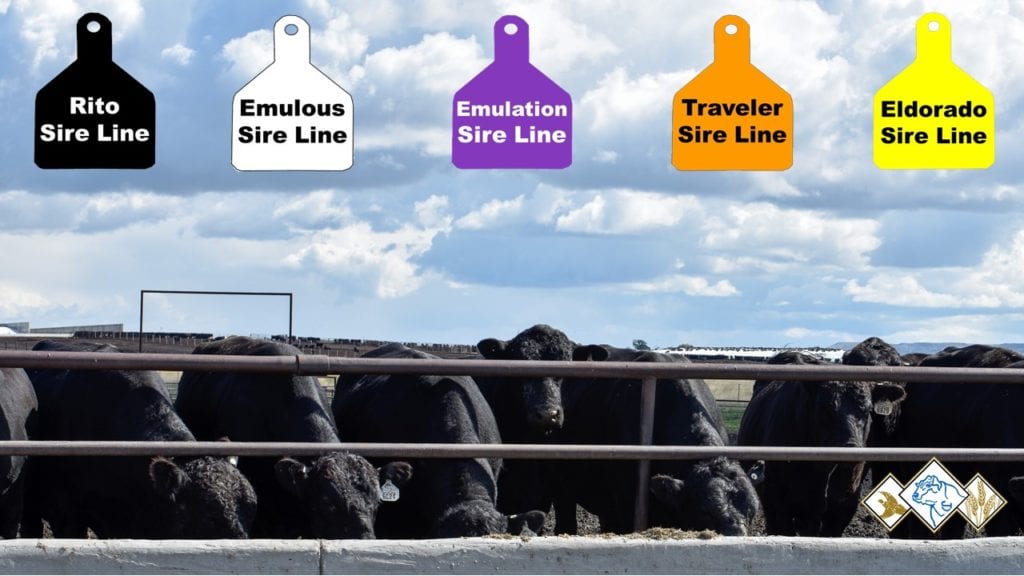
We have been asked, “Why do you talk about sire lines, and do they really matter?”
We to begin to answer that in this multi-part Blog on Sire Lines. We hope you enjoy this blog and invite you to contact us with your feedback, questions, and your own observations.
Sire Lines & "Y" They Matter - Part 1
“Y” He’s a Bull
The pair of sex chromosomes are what determine whether the calf will be a bull or heifer. Heifer calves have two X chromosomes, whereas bull calves have one X chromosome & one Y chromosome.
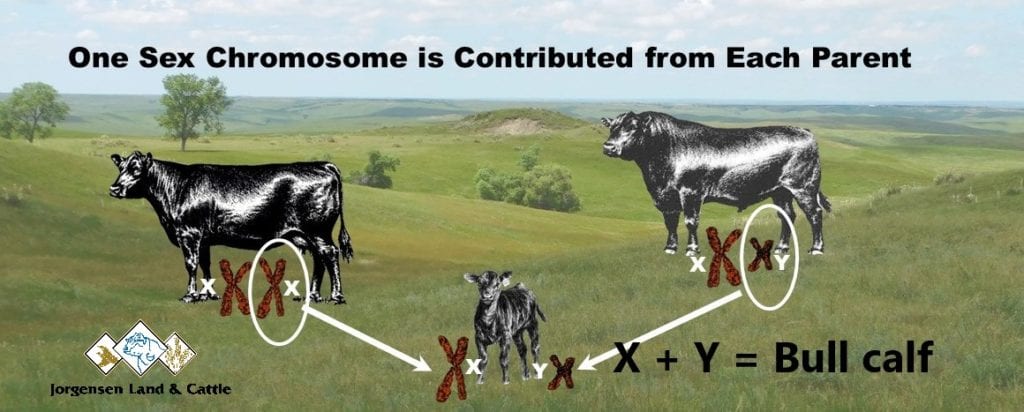
The Y chromosome contains genes that produce a substance (TDF) that causes the embryo to develop testes and become a bull calf, but the work of the Y chromosome does not end at that point!
Factoid: The Y chromosome can sometimes look something like the letter “Y” (see the blue images from the electron microscope above), but it does not always look that way. Many people think that is why it was named “Y chromosome,” but the real reason is that it was discovered after the X chromosome had been discovered and named. Since the letter Y was the next letter after X, it got the name “Y chromosome.
“Y” the Y Chromosome Matters
Y chromosomes are only about 1/3 of the size of the X chromosomes (see photo at right). The Y chromosomes in cattle contain more than 20-times the number of genes that human Y chromosomes contain.
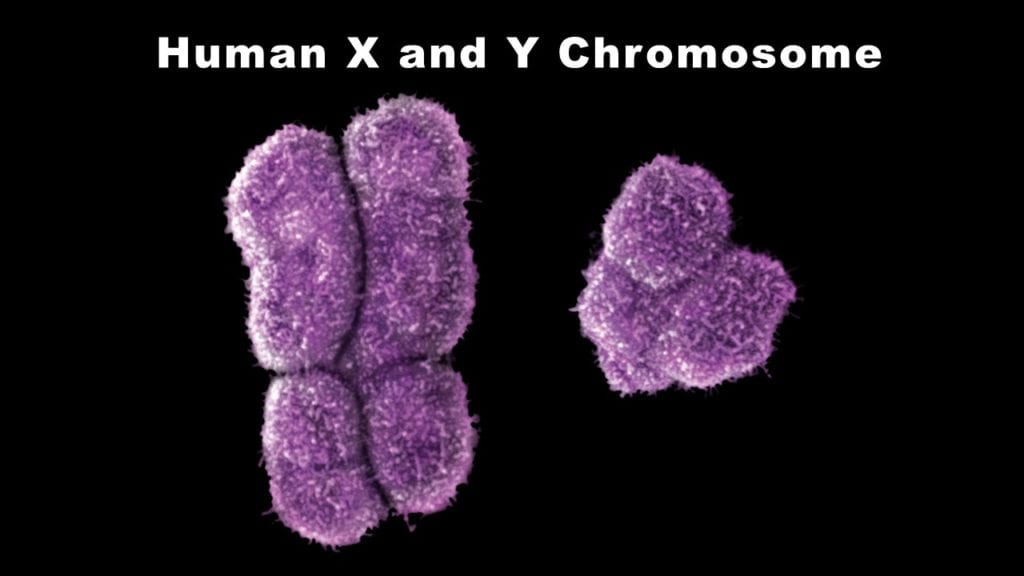
For decades, it was believed that the only job of the Y chromosome was to tell an embryo to be a male. Since it was so small and hard to read, it was generally ignored by researchers. However, in the last few years, we have learned a lot about the Y chromosome, including that it contributes to masculinity, male reproductive performance, and impacts a lot of genes on other chromosomes throughout the body, including immunity.

The Y chromosome is present in every cell of bull calves. Researchers are finally realizing that there must be a purpose for that. We now know that genes on the Y chromosome regulate transcription (the first step in gene expression) of genes on other chromosomes, potentially influencing biological functions throughout the life of the calf and in every tissue in the body.
We have recently learned (2013) that one segment of the Y chromosome varies between & within breeds and may be responsible for differences in Scrotal Circumference, Percentage of Normal Sperm, and Rebreeding Rates in Holsteins, and could possibly serve as a marker for early prediction of which bull calves will have greater reproductive capacity to settle cows.
“I got my ‘Y’ from my daddy’s side of the family,” said every bull calf
The Y chromosome is present in males only (with a very few genetic exceptions) and can only be passed directly from Sire to Son through the male line (Sire Line). One example of this is the masculinity readily transmitted by the Rito Sire Line throughout generations (click on Rito Line photo at Left to enlarge for easier viewing).
We know that DNA sequences can change over time and it seems that those changes can occur faster on the Y chromosome than on the X chromosome. Since these changes on the Y chromosome can impact gene expression across the body – we might see differences between Sire Lines – and we do! Appropriately utilizing foundational Angus sire lines in our breeding program enables us to offer appropriate Angus seedstock options for cow herds across America.
Join us next time for Sire Lines & ‘Y’ They Matter – Part 2: Sire Line Origins & Lessons from Linebreeding Programs
Thank you for your interest in this blog series and we welcome you to relay your thoughts, questions and your own observations related to this and other topics that you would like to see us address. Please email those to [email protected] . Also, if you are interested in reference materials from this series, please ask.
For a brief review of our sire lines and what they impart to our breeding program, we welcome you to follow this link to the Jorgensen Sires Lines page of our website.
